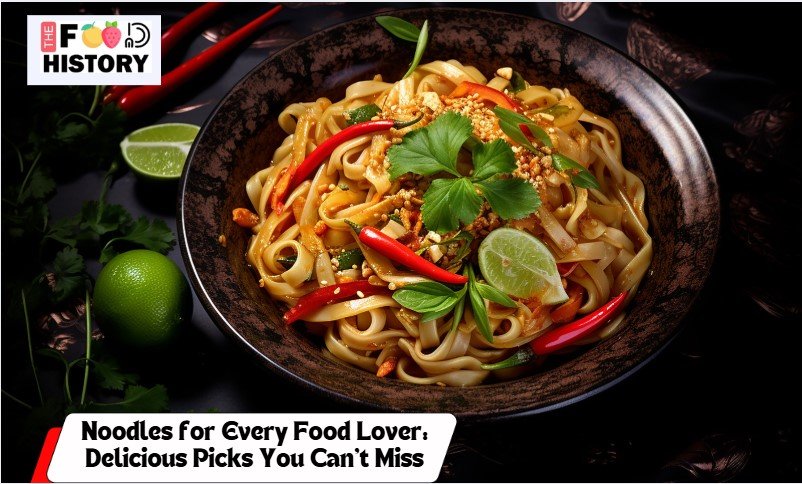The Silk Road was more than just an ancient trade route; it was a bridge between cultures, flavors, and traditions. As silk, spices, and goods exchanged hands, so did ideas and ingredients, forever altering the way people cooked and ate. Foods like spices from India, noodles from China, and fruits from Central Asia found new homes in faraway kitchens. This flow of ingredients didn’t just add variety to diets—it blended traditions, creating dishes we still savor today. Get ready to explore how this historic route shaped cuisines and brought the world to the table.
The Silk Road: A Gateway for Culinary Traditions
As caravans traversed the ancient Silk Road, they carried far more than silk and precious goods. They transported flavors, aromas, and ingredients that would forever shape how the world eats. Every spice, fruit, grain, and nut that passed through this vast network became a culinary spark, lighting up kitchens and inspiring entirely new dishes in lands far from their origins. Let’s explore how this historic artery of trade and culture transformed dining tables across continents.

Spices that Transformed Regional Cuisines
Imagine a time when your meal was simple, not because you wanted it to be, but because certain flavors were out of reach. Thanks to the Silk Road, spices like cinnamon, black pepper, and saffron began a journey that would redefine taste.
- Cinnamon, originally harvested from trees in Sri Lanka and India, became a symbol of luxury across Europe and the Middle East. It sweetened desserts, flavored stews, and even found its way into medicinal recipes.
- Black pepper, long treasured in South Asia, brought a sharp heat that transformed bland dishes into something memorable. It quickly became so prized in Europe that it was sometimes referred to as “black gold.”
- Saffron, derived from the delicate crocus flower, traveled from Persia to every corner of the Silk Road. Its golden hue and floral flavor elevated rice dishes, baked goods, and even drinks.
These spices didn’t just add new flavors; they sparked creativity in kitchens and redefined how people experienced food.
Fruits and Nuts in Transit
Close your eyes and think of a rich, juicy apricot, a handful of pistachios, or the luscious sweetness of a date. Now, imagine a world where these treats never left their native lands. The Silk Road changed that forever.
- Apricots, believed to have originated in Central Asia, became treasures in Europe and the Mediterranean. Their natural sweetness turned them into staple ingredients for preserves, desserts, and savory dishes alike.
- Dates, a Middle Eastern treasure, made their way to Central Asia and beyond. Packed with natural sugar and nutrients, they became essential not only for their flavor but for their energy-boosting qualities—a perfect food for long journeys.
- Pistachios and almonds also hitched a ride along the Silk Road. These nuts, rich in healthy fats and flavors, became staples in everything from Persian desserts like baklava to Indian curries.
The journey of these fruits and nuts didn’t only change what people ate, it brought joy, energy, and indulgence to cuisines worldwide.
Wheat and Rice: Grains on the Move
Grains have always been a cornerstone of the human diet, but the Silk Road expanded their reach, altering the ways we cook and eat on a global scale.
- Wheat, domesticated in the Fertile Crescent, spread eastward into Asia and westward into Europe. Its versatility enabled the creation of bread, pasta, and pastries, forming the foundation of countless cultural diets.
- Rice, cultivated in China for thousands of years, found its way into Central Asia, the Middle East, and eventually into Mediterranean cuisine. It started new food traditions, from Persian pilaf to Italian risotto.
The movement of these grains didn’t just feed people—it nourished entire civilizations. They became symbols of sustenance and creativity, shaping traditions that remain vibrant today.
The Silk Road’s culinary exchanges highlight a time when the world grew smaller, not through technology, but through shared tastes and traditions. These humble ingredients united distant regions, creating connections that still linger on our plates.
Unexpected Luxuries That Redefined Diets
The Silk Road introduced more than just essential staples and everyday ingredients; it ushered in luxuries that reshaped diets and traditions. These weren’t items people needed to survive, but they became central to rituals, celebrations, and indulgence. In many cases, they turned into cultural pillars, weaving themselves into the daily lives of those who encountered them. Two fascinating examples of this transformation are tea and sugar.

Tea: A Commodity and Cultural Symbol
Imagine a cold, brisk morning where the steam from a warm cup of tea wraps itself around your face like a comforting blanket. Today, many of us associate tea with coziness, focus, or even mindfulness, but the journey of tea from plant to cultural icon began centuries ago. Originating in ancient China, tea leaves found their way westward through the Silk Road, transforming into one of the most sought-after commodities of the time.

As tea reached new regions, its significance evolved. In East Asia, it was not just a beverage but an art form, celebrated in ceremonial rituals that emphasized harmony and respect. Moving further west, it became a social cornerstone, intertwined with conversation and hospitality. In parts of the Middle East, it was served endlessly to guests, often sweetened to balance its bitterness. By the time tea reached Europe in the 17th century, it was a status symbol, enjoyed by the wealthy in elegant porcelain teacups.
Tea wasn’t just a drink, it was a unifier, woven into the habits and traditions of diverse communities. Whether steeped in a delicate pot on a Japanese tatami mat or poured from a silver samovar in Russia, tea added warmth to human connection. What started as a simple infusion of leaves turned into a global tradition, changing the way people gathered, relaxed, and even expressed their culture.
The Sweet Story of Sugar
If tea brought warmth, sugar delivered delight. Before sugar began its journey along the Silk Road, most societies relied on honey to sweeten their food. Sugarcane, first cultivated in South Asia, was processed into crystallized sugar that made transport easier. As it traveled west, sugar changed how people experienced flavor, adding a new element of richness and indulgence to their meals.

By the time sugar reached the Middle East and Mediterranean regions, it was no longer just an additive, it had become a luxury. Bakers used sugar to craft sweets, candies, and desserts that transformed the occasional meal into something celebratory. Imagine the first time someone bit into a flaky pastry drizzled with syrup or a spiced cake glazed with this newfound sweetness. The effect was revolutionary, and sugar quickly gained a reputation as a treasured ingredient.
Eventually, sugar worked its way into beverages as well. Think of a steaming cup of mint tea in Morocco or a frothy Turkish coffee laced with sweetness. These drinks became cultural rituals, enriched not only by flavor but by shared experiences. Sugar allowed people to mark special occasions with a touch of indulgence. From festive treats at weddings to the delicate decorations on holiday desserts, it made ordinary meals feel extraordinary.
Sugar didn’t just sweeten food, it sweetened life itself. It became a reminder of joy, a symbol of prosperity, and an essential part of human celebration. Thanks to the Silk Road, this golden crystallized treasure brought a touch of magic to tables worldwide, one spoonful at a time.













